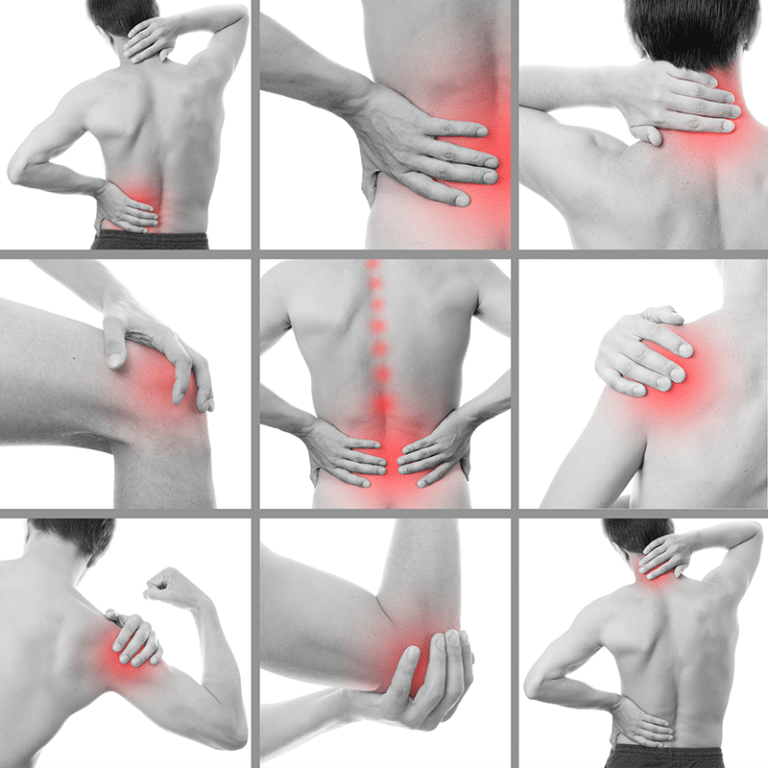
Are you suffering from chronic pain that is affecting your quality of life? Have you tried various treatments with no success?
If so, you may want to consider interventional pain management. Pain is a common problem that affects millions of people worldwide. It can be caused by a wide range of conditions, from injuries and surgeries to chronic diseases such as arthritis and cancer.
While traditional pain treatments such as medications and physical therapy can be effective, they may not always provide long-term relief.
Interventional pain management is a specific area of medicine that utilizes less invasive techniques to both identify and treat pain. These procedures can provide long-term pain relief by targeting specific areas of the body.
Let’s discuss the conditions that can be treated with chronic pain non-pharmacological treatment, back pain non-pharmacological treatment, and non-pharmacological treatment for pain example as well as show how it can help improve your quality of life.
Interventional pain management is a medical specialty that uses minimally invasive procedures to diagnose and treat chronic pain.
These procedures target the source of pain and provide relief without the need for surgery. Interventional pain management techniques include injections, nerve blocks, radiofrequency ablation, and spinal cord stimulation.
Conditions commonly treated with interventional pain management include back pain, neck pain, sciatica, arthritis, fibromyalgia, and chronic headaches.
Interventional pain management directly targets pain sources to effectively relieve patients who have not responded to other treatments, improving their quality of life and reducing dependence on pain medications.
Musculoskeletal pain is pain that affects the bones, muscles, ligaments, tendons, and nerves. This type of pain is often caused by injury, overuse, or degenerative conditions such as arthritis.
Interventional pain management techniques can be used to treat musculoskeletal pain by targeting the source of the pain.
Back pain is one of the most common types of chronic pain, affecting over 80% of adults during their lifetimes. It can be caused by many factors such as poor posture, injury, or inflammation.
Injections and nerve blocks are two common interventional pain management techniques used to treat back pain. These procedures aim to reduce inflammation and provide long-term pain relief.
Neck pain is a common type of pain that can be caused by poor posture, injury, or arthritis. Treatment options for neck pain may include physical therapy, medication, and in severe cases, surgery.
However, there are also many simple exercises and stretches that can help alleviate neck pain, such as neck rolls and shoulder shrugs.
Hip pain can be caused by a variety of factors, including arthritis, injury, and bursitis. Treatment options for hip pain may include physical therapy, medication, and in severe cases, surgery.
In addition, maintaining a healthy weight and engaging in regular exercise can help prevent hip pain from occurring in the first place.
Knee pain is a common type of pain that can be caused by injury, arthritis, and overuse. Treatment options for knee pain may include physical therapy, medication, and in severe cases, surgery.
In addition, engaging in low-impact exercises such as swimming and cycling can help prevent knee pain from occurring.
Head and neck pain are common types of pain that can be caused by tension headaches, migraine headaches, sinus infections, or injury. Different pains from different sources can be managed differently.
Migraines are a type of headache that can cause intense pain, nausea, and sensitivity to light and sound. They can last for hours or even days and can be triggered by various factors such as stress, certain foods, or hormonal changes.
Pain management techniques such as medication, relaxation techniques, and lifestyle changes can help manage the symptoms of migraines.
Occipital Neuralgia is a condition that causes severe pain in the back of the head and neck. It occurs when the occipital nerves, which run from the top of the spinal cord to the scalp, become inflamed or injured.
Pain management techniques for Occipital Neuralgia include medication, nerve blocks, and physical therapy.
Medications like anti-inflammatories and muscle relaxants can help reduce pain, while nerve blocks can provide temporary relief by blocking the pain signals from reaching the brain.
Physical therapy can also help relieve tension in the neck and improve posture, reducing the risk of triggering the condition.
Trigeminal Neuralgia is a condition that causes severe facial pain, often described as a sharp, stabbing sensation. It occurs when the trigeminal nerve, which is responsible for sensation in the face, becomes compressed or damaged.
Pain management techniques for Trigeminal Neuralgia include medication, nerve blocks, and surgery.
Medications like anticonvulsants and muscle relaxants can help reduce pain, while nerve blocks can provide temporary relief by blocking the pain signals from reaching the brain. In severe cases, surgery may be necessary to relieve pressure on the trigeminal nerve.
Cancer pain is a type of pain that can be caused by the disease itself or its treatments. Pain management techniques for cancer pain include medication, physical therapy, and psychological support.
Nerve blockers are medications that block the transmission of pain signals from the nerves to the brain. They are injected into or around the nerves that are causing the pain.
Nerve blockers can provide rapid pain relief and can be used for both acute and chronic pain caused by cancer. They are often used in combination with other pain medications.
Radiofrequency ablation is a minimally invasive procedure that uses heat to destroy the nerve fibers that are causing the pain.
It is usually performed under local anesthesia and involves inserting a small needle into the affected nerve. The needle delivers a high-frequency electrical current that heats up the nerve and destroys it.
Radiofrequency ablation can provide long-lasting pain relief and is often used for chronic pain.
Spinal cord stimulation is a procedure that involves implanting a small device under the skin that sends electrical signals to the nerves in the spinal cord. The electrical signals interfere with the transmission of pain signals to the brain, providing pain relief.
Spinal cord stimulation is often used for chronic pain that has not responded to other treatments.
Chronic Regional Pain Syndrome (CRPS) is a condition that causes chronic pain in the arms, legs, or other parts of the body.
It is caused by damage to the nervous system and can be difficult to treat. Treatment for CRPS includes medications, physical therapy, nerve blocks, biofeedback, and psychological support. Medications such as:
Stellate Ganglion Block (SGB) is a pain management technique that involves injecting a local anesthetic into the stellate ganglion, a group of nerves located in the neck.
SGB has been shown to be effective in treating CRPS by blocking the sympathetic nerves that contribute to the pain and inflammation associated with the condition.
The procedure is minimally invasive and can be performed on an outpatient basis. Many patients report significant pain relief after just one SGB treatment.
Sympathetic Blockade is another pain management technique that targets the sympathetic nerves. This technique involves injecting a local anesthetic into the sympathetic nerves that are responsible for the pain and inflammation in the affected limb.
Sympathetic Blockade can be performed at various levels, depending on the location of the affected nerves. The procedure is minimally invasive, and patients can usually return to normal activities shortly after the treatment.
Sympathetic Blockade has been shown to be effective in reducing pain and improving function in patients with CRPS.
Spinal Cord Stimulation (SCS) is a pain management technique that involves implanting a device that delivers electrical impulses to the spinal cord. The electrical impulses interfere with the pain signals that are being sent to the brain, effectively reducing the sensation of pain.
SCS has been shown to be effective in treating chronic pain conditions, including CRPS. The procedure is minimally invasive and can be performed on an outpatient basis. Patients typically report a significant reduction in pain and improvement in function after SCS.
Pelvic pain is a type of pain that affects the lower abdomen and pelvis. It can be caused by various conditions:
Sacroiliac joint dysfunction occurs when there is an issue with the joint that connects the sacrum (lower spine) to the pelvis.
This can cause pain in the lower back, hips, and legs. Pain management techniques for sacroiliac joint dysfunction may include physical therapy, chiropractic adjustments, and injections of corticosteroids to reduce inflammation.
The piriformis muscle is located in the buttocks and can cause pain if it becomes tight or inflamed. This is known as piriformis syndrome and can cause pain in the buttocks and down the back of the leg.
Pain management techniques for piriformis syndrome may include stretching exercises, massage therapy, and injections of anesthetic and steroid medications.
Chronic pelvic pain syndrome is a condition that affects both men and women and can cause pain in the pelvic area, lower back, and legs.
Pain management techniques for chronic pelvic pain syndrome may include physical therapy, nerve blocks, and medications to reduce inflammation and pain.
Chronic pain can have a profound impact on a person’s physical, emotional, and mental well-being. It can lead to depression, anxiety, and other mental health issues. It can also affect a person’s ability to work, socialize, and engage in activities that they enjoy.
Seeking treatment for chronic pain can help manage the pain and improve the overall quality of life.
If you are experiencing chronic pain, it is essential to seek professional medical help. Momentum Medical can help diagnose the underlying cause of the pain and develop a personalized treatment plan that is tailored to your needs.
We can also prescribe medication or recommend physical therapy to help manage the pain. Contact us at Momentum Medical to get the pain management you need.

Serving Volusia, Flagler, Orange, Osceola, Hillsborough, Pasco, Pinellas, and Seminole county patients with back pain conditions, sports injury, work injury, headaches, lower back pain, auto accident injuries, neck pain and more.
Our staff can accommodate Spanish, French and Russian speaking patients. All other languages with enough notice we can schedule a translator.
Todas nuestras localizaciones tienen hablantes de español en el personal.
© 2024 Momentum Medical